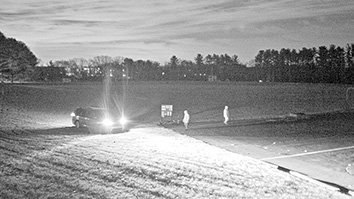Citation
Yamamoto, N. A.; Lavery, L. L.; Whiting, G. L.; Nowacki, B. F.; Akcelrud, L.; Arias, A. C.; Roman, L. S. Photovoltaic investigation of new co-polymers based on thiophene, fluorine and phenylene. Fall 2010 Materials Research Society Meeting; 2010 November 29 – December 3; Boston, MA.
Abstract
We have investigated a series of new electron donor co-polymers in organic thin-film solar cells. Co-polymerization allows us to create new materials by tailoring unit ratios to combine properties and behaviors of different materials. The co-polymers used in this study were composed of thiophene, phenylene and fluorine units, where the thiophene content was kept constant while the fluorine/phenylene ratio was varied. For every co-polymer ratio, we report results in three different structures: monolayer, bilayer and bulk heterojunction. Using vapor-deposited C60 as the electron acceptor in bilayer structures, we show the effect of altering the thickness of both the copolymer and fullerene films. Bilayer devices were further analyzed using a model for charge transport, which indicated a dependence of effective mobility on film thickness. For the bulk heterojunction system [6,6]-phenyl-C61-butyric acid methyl ester (PCBM) was used as the electron acceptor and initial devices using this polymer showed a peak external quantum efficiency of 33% and a AM1.5 power conversion efficiency of 0.7%. For both the bilayer and heterojection cells it was found that a 1:1 ratio of phenylene:fluorine units led to the highest device performance.


